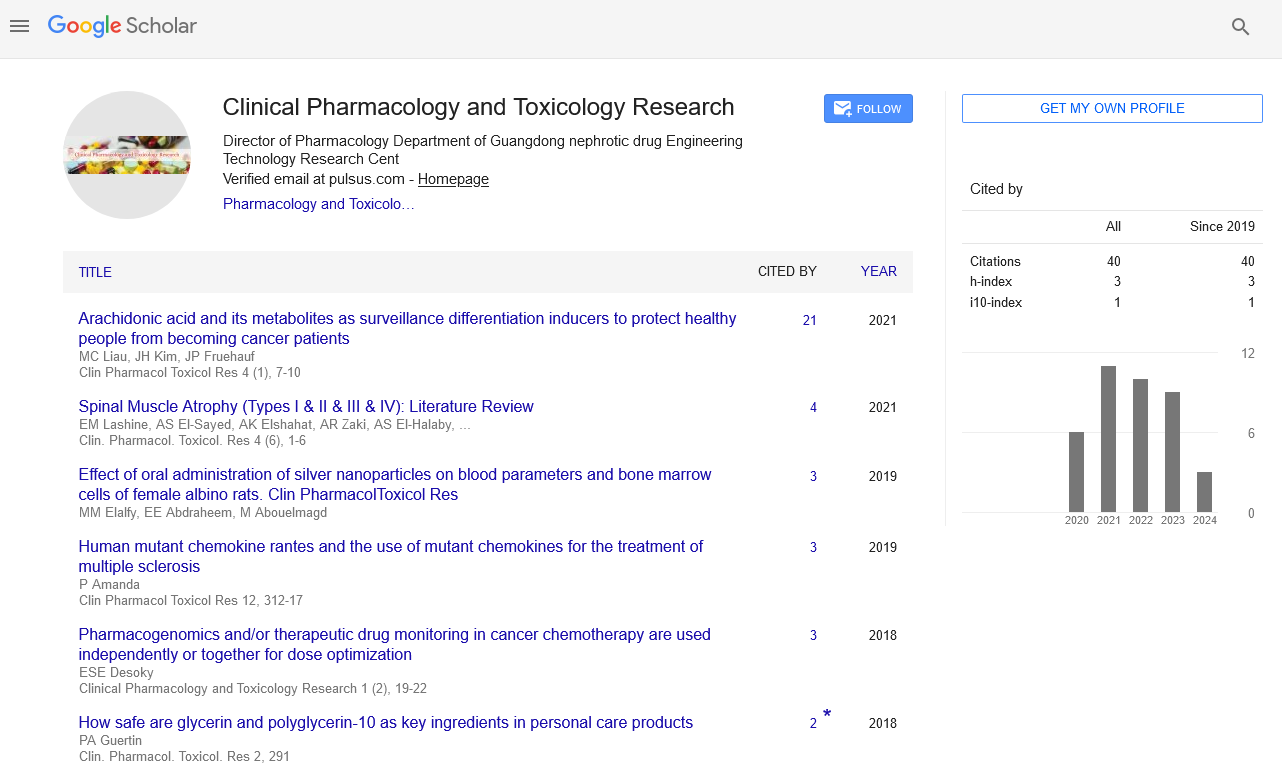Information about adverse drug reaction
Received: 17-Sep-2021 Accepted Date: Sep 30, 2021; Published: 07-Oct-2021
Citation: Zhang YT. Information about adverse drug reaction. Clin Pharmacol Toxicol Res 2021;4(5):1.
This open-access article is distributed under the terms of the Creative Commons Attribution Non-Commercial License (CC BY-NC) (http://creativecommons.org/licenses/by-nc/4.0/), which permits reuse, distribution and reproduction of the article, provided that the original work is properly cited and the reuse is restricted to noncommercial purposes. For commercial reuse, contact reprints@pulsus.com
Adverse Drug Reaction (ADR) can be characterized as 'an obviously hurtful or horrendous response coming about because of a mediation identified with the utilization of a therapeutic item; unfavorable impacts for the most part anticipate danger from future organization and warrant avoidance, or explicit treatment, or adjustment of the dose routine, or withdrawal of the item'. Since all medications have the potential for antagonistic medication responses, hazard advantage examination (breaking down the probability of advantage versus hazard of ADRs) is important at whatever point a medication is recommended. Medication poisonousness portrays unfavorable impacts of a medication that happen in light of the fact that the portion or plasma focus has transcended the helpful reach, either inadvertently or purposefully.
Keywords
ADRs; Pharmacovigilance; Medication
Introduction
Adverse Drug Reaction (ADR) is an undesirable or hurtful response experienced after the organization of a medication or blends of medications under typical states of utilization and is suspected to be identified with the medication. An ADR will ordinarily require the medication to be suspended or the portion reduced. An unfriendly occasion is hurt that happens while a patient is taking a medication, regardless of whether the medication is suspected to be the reason. Adverse Drug Reaction (ADRs) stay a test in current medical care, especially given the expanding intricacy of therapeutics, a maturing populace and rising multi-morbidity.
Classification
Adverse Drug Reaction (ADRs) named either Type A or Type B.
• Type A: Augmented pharmacologic impacts - portion reliant and unsurprising. Clinical instances of Type A ADRs are normal and doctors frequently need to diminish the doses of the medication so the patients can endure the treatment. Patients can be engaged to know about the ADRs and decrease the frequency of redundant Type A ADRs.
• Type B: Idiosyncratic and it can't be anticipated from the known pharmacology of a medication. These responses are related with low grimness and high mortality. Formal recording of the frequency of Type B responses can be life-saving.
Diagnosis
ADRs can be hard to analyze for some reasons. They might emulate the indications of a typical sickness, they might be uncommon or startling, or in patients with different co-morbidities or being treated with a few medications, the medication related manifestations are not self-evident. Medical services experts in this way must be careful and alarm to sedate responses as a causative factor when there is a shortfall of option clinical clarifications for the introducing indications. You might require extra testing on the off chance that you created hypersensitivity after you were presented to a trigger and, worked out. This is called work out incited hypersensitivity. Medications can be a trigger. You may likewise require any of the accompanying: fix test, skin prick test, intradermal test, drug incitement test [1-4].
Conclusion
Pharmacovigilance (or medication security) is the act of observing the impacts of clinical medications after they have been authorized for use. One significant objective of this action is to distinguish, order, survey and screen already unreported unfavorable responses, fully intent on forestalling unfriendly impacts and lessening the impressive financial and clinical expenses related with adverse drug reaction.
REFERENCES
- Kusch MK, Haefeli WE, Seidling HM. How to meet patients’ individual needs for drug information-a scoping review. Patient preference and adherence. 2018;12:2339.
- Horne R, Weinman J. Patients' beliefs about prescribed medicines and their role in adherence to treatment in chronic physical illness. Journal of psychosomatic research. 1999;47(6):555-67.
- Náfrádi L, Galimberti E, Nakamoto K, et al. Intentional and unintentional medication non-adherence in hypertension: the role of health literacy, empowerment and medication beliefs. Journal of public health research. 2016;5(3).
- Young A, Tordoff J, Smith A. ‘What do patients want?’Tailoring medicines information to meet patients' needs. Research in Social and Administrative Pharmacy. 2017;13(6):1186-90.





